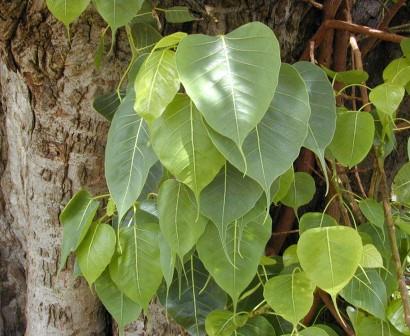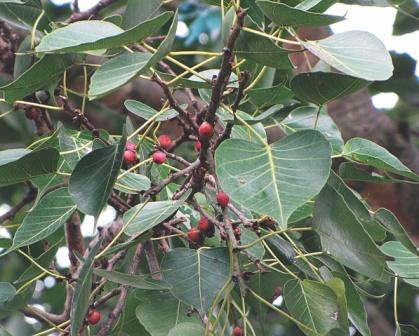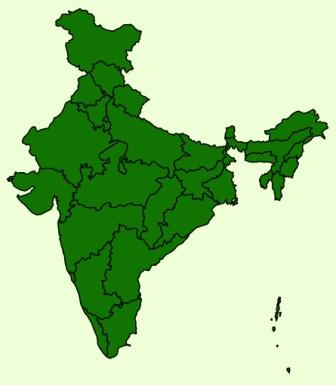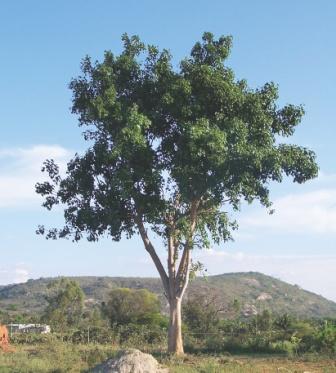Sacred fig / Peepal tree / Arasu
Ficus religiosa
Description
General Information :
- Peepal tree is a deciduous semi - evergreen trees,
- Bark reddish-brown or yellowish-brown in color.
- Leaves simple, alternate and glossy dark green in color.
- Flowers unisexual red in color.
- Fruit is a capsule orange, pink or dark crimson in color.
- The tree is considered sacred by the followers of Hinduism, Jainism and Buddhism.
Distribution :
-
widely spread throughout India
Habitat : It is found scattered in forests, where it propagates as an epiphyte on other trees especially widely found in uplands and plane area.
Soil : Deep, alluvial sandy loam with good drainage
Soil pH : 5.5-6.5
Altitude :Up to 1520 m (MSL)
Rainfall :500-5000 mm
Temperature : 16-35ºC
Terrain : Plain
Tree Characteristics :
- Drought resistant and light demander.
Habit : Deciduous Tree
Planting Guidelines
Natural Regeneration :
- Naturally regenerates by seeds and root suckers.
Artificial Regeneration :
- Propagated by seeds and vegetative cuttings.
Seed collection and Storage :
- Fruits are collected and depulped and squeezed in water.
- The floating seeds are collected and dried on blotting paper in shade.
- The dried seeds are stored in a clean polybag.
Seed Treatment :
- Cold water treatment for 24 hours.
Nursery Technique :
- Seeds are broad casted in the mother bed mixed with sand and red earth.
- watering is done as on when required
- germination starts in about 2 weeks.
- Tow leaf stage individual seedlings could be pricked out into a polybag Shade was provided for at least 1 weak after each transplanting. Seedlings were susceptible to over-watering until the final transplant.
Plantation technique :
- Planting out is carried out during July in 30 cm3 pits,
- Under dry conditions, pit size of 60 cm3 with an interval 5 to 10 m Planting should be carried out after the commencement of monsoon
Care & Disease Control :
- Regular weeding and soil working should be taken care.
Yield :
Agro Forestory :
- Its large size, wide crown and spreading branches limits it’s agroforestry potential for intercropping with crops , or as a hedgerow planting.
Major uses :
Fodder:
- Its leaves are lopped as fodder for elephants, camels, goats and cattle; having about 10-14% crude protein. Silage prepared from the tree is palatable and digestible.
Timber:
- It is moderately durable under cover and quite durable under water. It is little used but is occasionally converted into packing cases, cheap boarding, yokes, spoons and bowls
Other uses :
Latex or rubber:
- Bird-lime can be prepared from its milky juice.
Tannin or dyestuff:
- Its bark is used in tanning.
Medicine:
- The ripe fruit is cooling and relieves foul taste, thirst, biliousness, diseases of blood and heart; it is a laxative and helps digestion.
- It is used for medicinal purposes, such as toothaches.
- Dried fruit cure asthma; seeds are useful in urinary discharge; young bark is an astringent.
Carbon stock :
0.699 tC/tree





